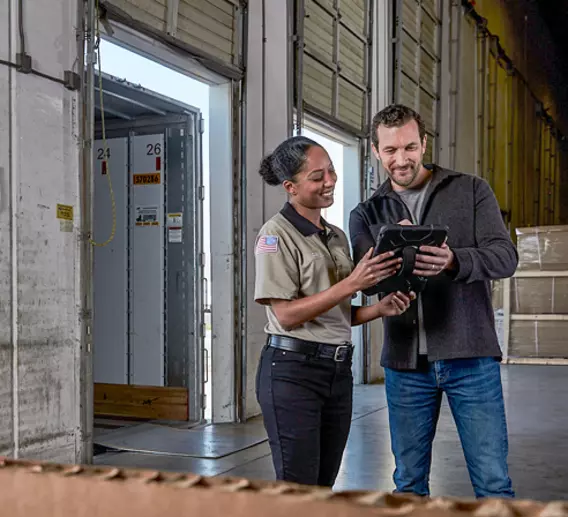What is LTL capacity — and what does it mean for shippers?
LTL capacity refers to the availability of equipment, space in that equipment and the resources needed to move your freight with an LTL carrier under acceptable terms (price, transit time, pickup/delivery windows, handling, etc.). It’s the key to getting your freight where it needs to go, on time and on budget. The good news is there are concrete ways to find the space you need in every market condition.
In the sections below, we’ll walk through strategies you can use to find available capacity, identify the right carriers to work with and keep your LTL shipments moving.
Why getting the right LTL capacity isn’t always easy
Because availability and pricing can change quickly, finding the right space can be challenging. Here are some of the most common reasons you may struggle to secure capacity:
Limited carrier networks
A carrier may cover some regions well but leave gaps in others, creating service inconsistencies. For businesses with diverse shipping patterns, this can mean juggling multiple providers to meet your needs. It can also mean dealing with higher costs and long transit times on underserved lanes.
Spikes in seasonal demand
Carrier networks quickly become stretched thin during peak shipping seasons, such as the holidays, back-to-school or industry-specific surges. Equipment and dock space fill up, drivers are overextended and pickups or deliveries may be delayed. Without proper planning, shippers can struggle to get their freight moved on time during these periods.
Relying on a single source
Depending on only one carrier or one type of capacity (such as only asset-based or strictly brokered) exposes you to unnecessary risk. That source could potentially be constrained because of labor shortages, surging demand or weather, and your freight can sit idle. Relying too much on a single option reduces flexibility and makes it harder to adapt when disruptions happen.
5 proven tactics to unlock more reliable solutions
Consider following these practical strategies to help improve your access to reliable LTL capacity:
1. Build strong, collaborative carrier relationships
Give carriers as much visibility as possible so they can plan resources to fill your needs. Offering a guaranteed minimum on volume or regular shipments can make a lane more viable for a carrier. And if you’re adaptable on pickup or delivery times, it can help carriers optimize networks.
2. Diversify your capacity sources
Use asset-based carriers for baseline reliability. Leverage brokerage or asset-light networks to cover gaps, serve challenging lanes or handle spikes in demand.
3. Optimize your freight profile
Improve packaging and palletization for easier handling. Standardize freight classes and packaging for smoother carrier operations.
4. Leverage technology for visibility and quick quoting
TMS and other digital tools provide faster quoting, better shipment tracking and help efficiently manage the unexpected. Data analytics highlight lanes that frequently face constraints so you can be proactive and adjust.
5. Create contingency plans
When LTL capacity tightens, plan alternate modes (like full truckload, intermodal or expedite). Define parameters for when to use brokered networks or other carriers.

Partner with ArcBest for more options and greater flexibility
Reliable LTL capacity requires proactive planning. ArcBest’s LTL solution is here to help you overcome challenges and adapt quickly. By blending dependable, asset-based LTL capacity from our carrier, ABF Freight, with an extensive brokerage and capacity network, we help ensure you can find the right option for your freight.
Let’s connect and discuss how to optimize your LTL shipments.







